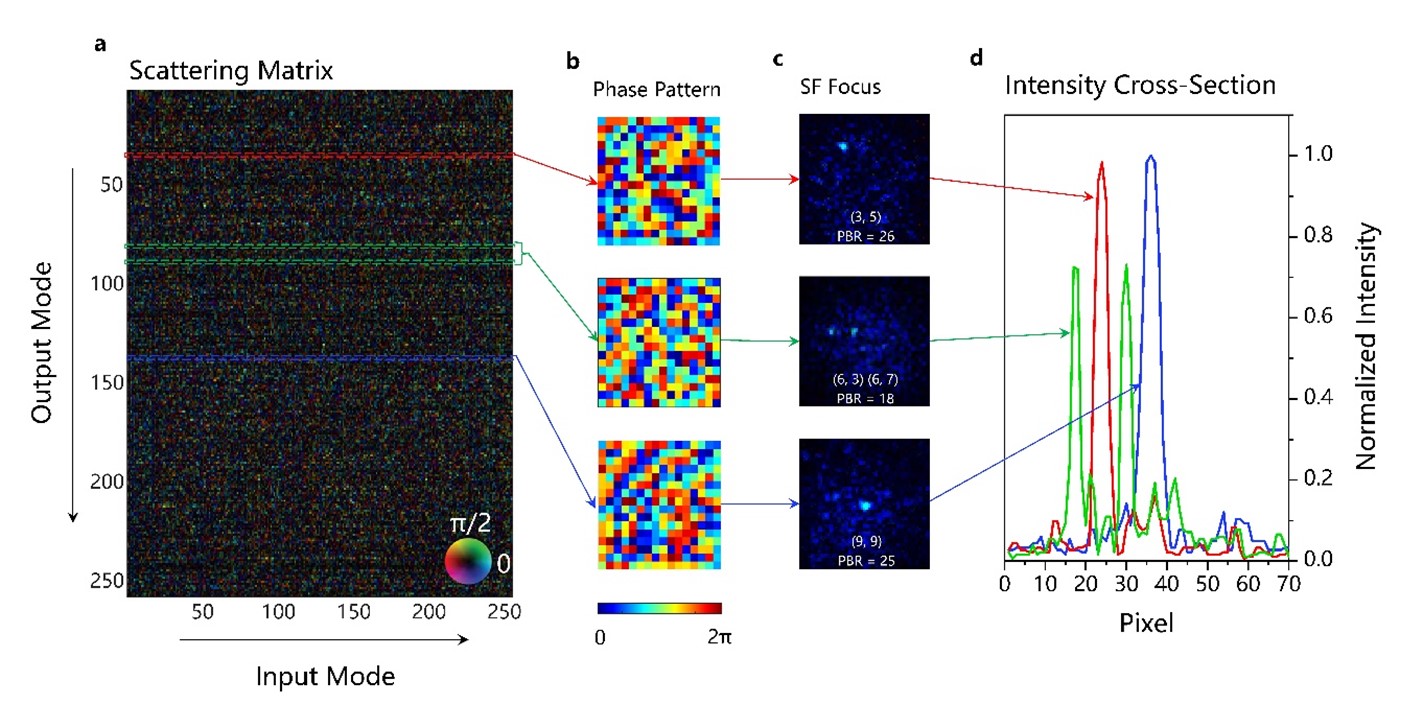
Scattering matrix method controls nonlinear light in scattering media. Credit: Xiangfeng Chen
In the intricate world of light, a journey through inhomogeneous media often leads to distortions in space, time, spectrum, and polarization. These distortions, detrimental to applications like optical manipulation, imaging, and communication, have long posed a challenge. Enter the art of wavefront shaping (WS) — a potent tool for correcting these wave maladies in linear optics. But that's not all. Nonlinearity adds a twist, finding purpose in fields from biological sensing to phototherapy. Now, picture combining these forces — nonlinearity and WS — opening doors to unprecedented control.
Yet, most existing setups rely on iterative feedback loops, guzzling computational resources and time. There's a smarter way now. As reported in Advanced Photonics, a team from Shanghai Jiao Tong University (SJTU) has developed a scattering matrix (SM) method that is capable of sculpting light output with minimal optimization time. As a bonus, SM offers insights into the scattering medium's mesoscopic traits, unveiling memory effects and transmission eigenchannels.
The SJTU team has taken the concept further. They've cracked the code to determine the SM of a scattering medium embedded with quadratic nonlinearity. Their method, using a 256x256 SM dimension, emerges from four-phase interferometry. They've proved its validity by coaxing nonlinear signals into refocused single and double spots, employing optical phase conjugation.
Imagine, a carefully orchestrated dance of light — where a matrix row's phase pattern triggers precise nonlinear focus. The result? Sum-frequency generation dances in multiple spots across the region of interest, each with comparable intensity and a remarkable peak-to-background ratio of about 25.
But that's just the beginning. The SM method wields unparalleled nonlinear scattered light control. The researchers showcase point-by-point scans along predefined paths, adjusting the phase pattern switch speed to fine-tune scanning pace. Their breakthrough offers a doorway to high-resolution scanning microscopy and particle trapping through dense, scattering media. Corresponding author Xianfeng Chen, principal investigator at the State Key Laboratory of Advanced Optical Communication Systems and Networks in Shanghai, remarks, “The scattering-matrix approach of nonlinear scattering medium opens a path towards nonlinear signal recovery, nonlinear imaging, microscopic object tracking, and complex environment quantum information processing.”
In essence, this work reimagines nonlinear scattering. Its implications span nonlinear signal recovery, microscopic imaging, and tracking through scattering media, even delving into the intricate realm of quantum information processing within complex environments. The future of light manipulation looks astonishingly bright.

Reconfigurable focusing of nonlinear signals via wavefront shaping method based on SM. (a) Measured SM which connects the input modes (horizontal axis) and output nonlinear modes (vertical axis). Hue and brightness represent phase and amplitude, respectively. Calculated phase patterns (b) and the corresponding focal spots (c) located on different positions of ROI. (d) Intensity cross-section of the nonlinear focal spots located on different sub-regions of ROI. Credit: Ni, Liu, et al., doi 10.1117/1.AP.5.4.046010
For details, read the Gold Open Access article by Ni, Liu, et al., “Nonlinear harmonic wave manipulation in nonlinear scattering medium via scattering-matrix method,” Adv. Photon. 5(4) 046010 (2023), doi 10.1117/1.AP.5.4.046010







